by Johanna Hardt // Feb. 6, 2020
Low monotone drone sounds lure the crowd in. People start filling up the seats around me, while I’m starting to ease into the sonic ambience of sustained low frequencies. The mass of sound is not so much one of dread, but one of anticipation. Void of rhythm or melody, it creates a serene soundscape of suspense, forming the perfect backdrop for the eager expectancy of the public.
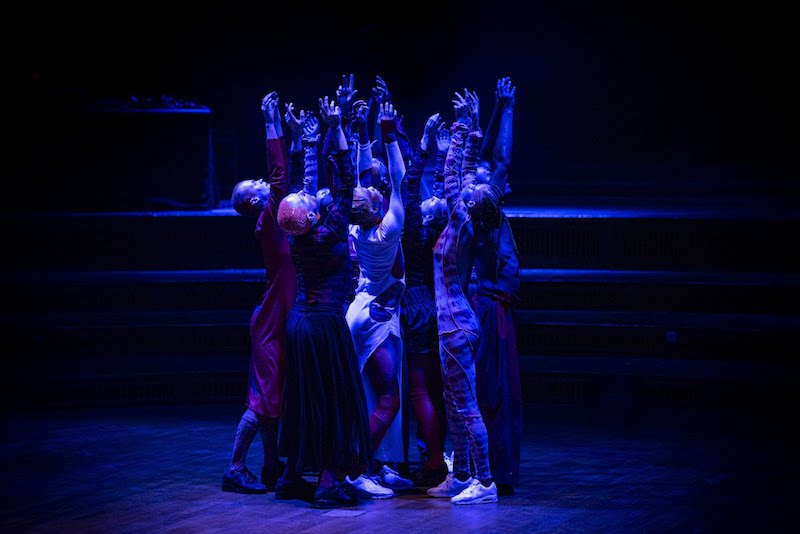
KDV Dance Ensemble: ‘Las Casas Invisibles’ performance at Funkhaus Berlin 2020, with live music by RAVEN, Floating Points and Lotic // Photo by Anna Agliardi
We are at Funkhaus, the former GDR broadcast centre in Berlin’s East, on the night of the premiere of ‘Las Casas Invisibles.’ Lead by choreographer and director Kiani del Valle, the eponymous KDV Dance Ensemble presents their debut performance. Its twisting bodies, translucent red fabrics on skin, raw synth textures and focused lighting work with and for each other, in coalition, unfolding into a piece about the endless search for belonging. “Never arriving at the concrete concept of home,” as the accompanying text defines the interplay of the multiple elements, ultimately designates a group of movers restless in their search for a fixed place of orientation. ‘Las Casas Invisibles’ formulates home as a subject not only of belonging but of longing. It uncovers a place of negotiation that positions the individual in relation to the rest of the world.
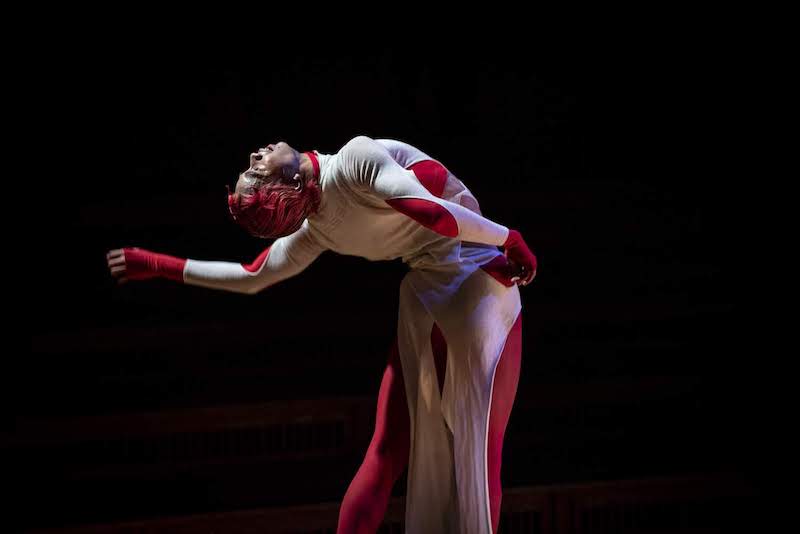
KDV Dance Ensemble: ‘Las Casas Invisibles’ performance at Funkhaus Berlin 2020, with live music by RAVEN, Floating Points and Lotic // Photo by Anna Agliardi
Live music by Floating Points and Raven, with his beat-oriented emphasis on physicality, is bound to define the energy of the movements and physical narratives. The inclusion of Lotic, known for her distinct voice, shifting like a soft but cutting whisper between the personal and political implications of moving through space as a femme trans person under the radar of the white, hetero, cis gaze, makes for a curious combination, somehow difficult to imagine. Yet, it is this very contrast that makes the work interesting and the unexpected ending that makes it memorable. Throughout the night, their sounds are subtle and stripped back, yet with the effect of immediately pulling you in. At times, they meander and get lost in detours, before suddenly veering into different territory. Fadeouts and false endings dictate the jerky stop movements of the bodies on stage; at times, things seem to get out of control, raging before making room for more melodic blends of synths textures and soft physical motions.
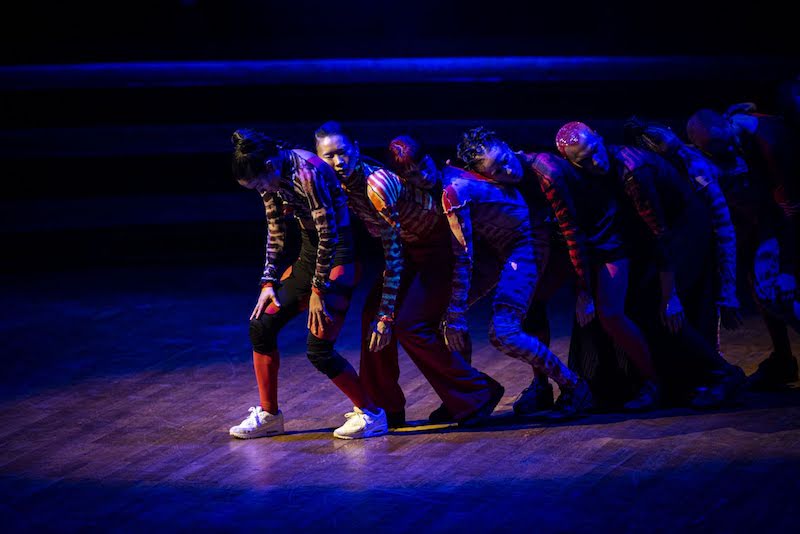
KDV Dance Ensemble: ‘Las Casas Invisibles’ performance at Funkhaus Berlin 2020, with live music by RAVEN, Floating Points and Lotic // Photo by Anna Agliardi
I find myself thinking about the difference between a body described as a dancer or as a mover when the lights shift from red into blue. Having persevered in-between the vigorous columns of the concert hall, the performers are now literally breaking loose from their rigidity. Slowly, they move through the tightly packed audience towards the centre. The choreography that follows does not keep to the designated performance area either. At several moments, movers are leaving the stage, shifting on different levels and in between the viewers.
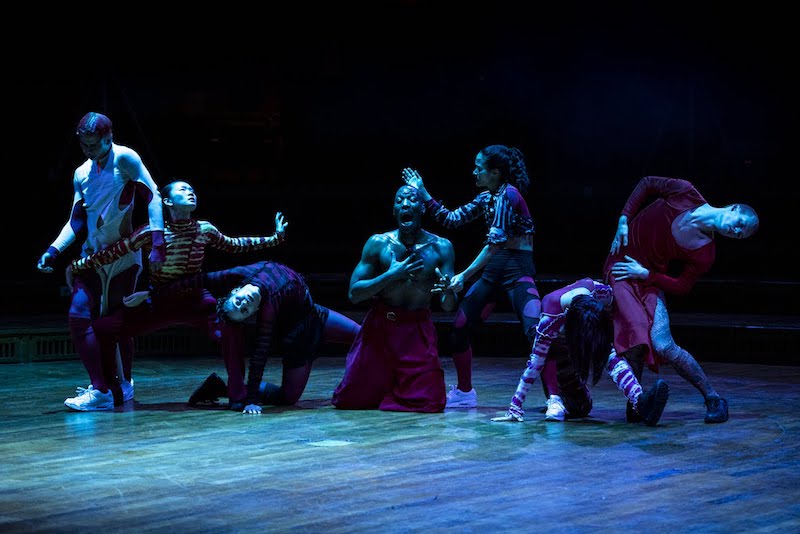
KDV Dance Ensemble: ‘Las Casas Invisibles’ performance at Funkhaus Berlin 2020, with live music by RAVEN, Floating Points and Lotic // Photo by Anna Agliardi
While this allows for different focal points within the choreography, to an audience member used to inhabit the controlled, all-encompassing, viewing position, it constitutes a particularly distressing moment. This inversion of classical viewing patterns gets intensified when suddenly all the lights turn on and the music stops. Without these accepted signifiers of the theatrical and the comforting darkness that allows us to forget where we are and who we are sitting next to, we find ourselves startled by the bright light of reality. Telling ourselves that this is part of the show does not lessen the eruption of anxiety when one performer starts shouting and others are confronting the audience with piercing looks.
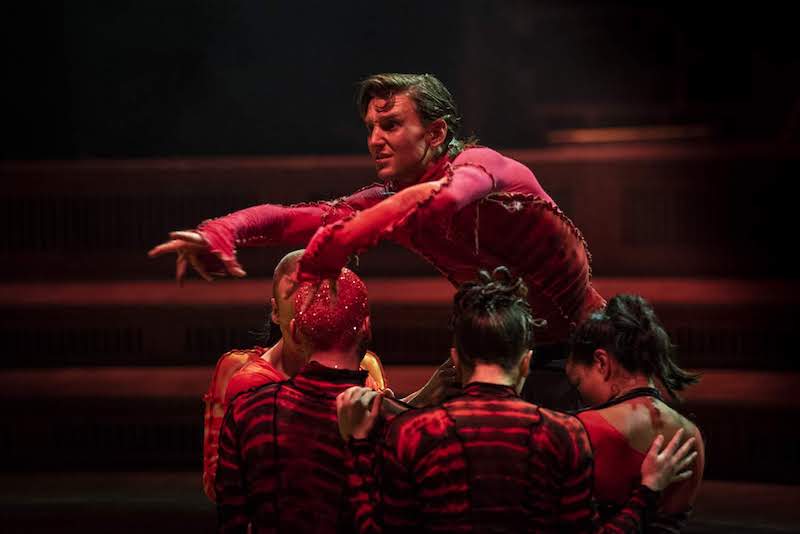
KDV Dance Ensemble: ‘Las Casas Invisibles’ performance at Funkhaus Berlin 2020, with live music by RAVEN, Floating Points and Lotic // Photo by Anna Agliardi
Fortunately, there are less luminous yet brighter moments during the show. Displayed power relations and interpersonal dynamics are acted out and transformed. Some of the movements seem oddly familiar. One playful interaction between two performers that spin each other around by their hands, whisper into each other’s ears until breaking apart in giggles reminds me of how my sister and I played when we were young. Some are more automated, with sharp motions and contorted limbs. Others bend the body at the mercy of some invisible force, possessed until it eases into looser movements.
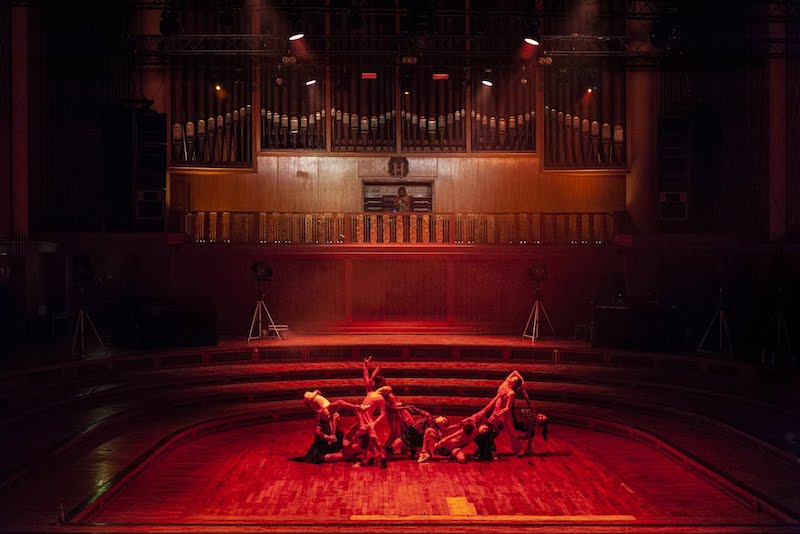
KDV Dance Ensemble: ‘Las Casas Invisibles’ performance at Funkhaus Berlin 2020, with live music by RAVEN, Floating Points and Lotic // Photo by Anna Agliardi
To say the show culminated in a surreal moment of unexpected sensation would be an understatement when Lotic appears, immersed in golden light, on the balcony in front of the organ and starts to sing. Her voice, to me, seems like a reminder of spoken utterance that does not elevate the linguistic as the sole marker for meaning and knowledge, but rather as one semiotic modality amongst other forms of embodied expressions. ‘Las Casas Invisibles’ presents a mapping of positions lost in different worlds, rootless between different pasts, presents and (potential) futures. The propensity to keep moving is personal to del Valle and serves as the dynamic of the piece, ultimately indicating the possibility of a collective in-betweenness and a multiplicity of homes in dance.





















